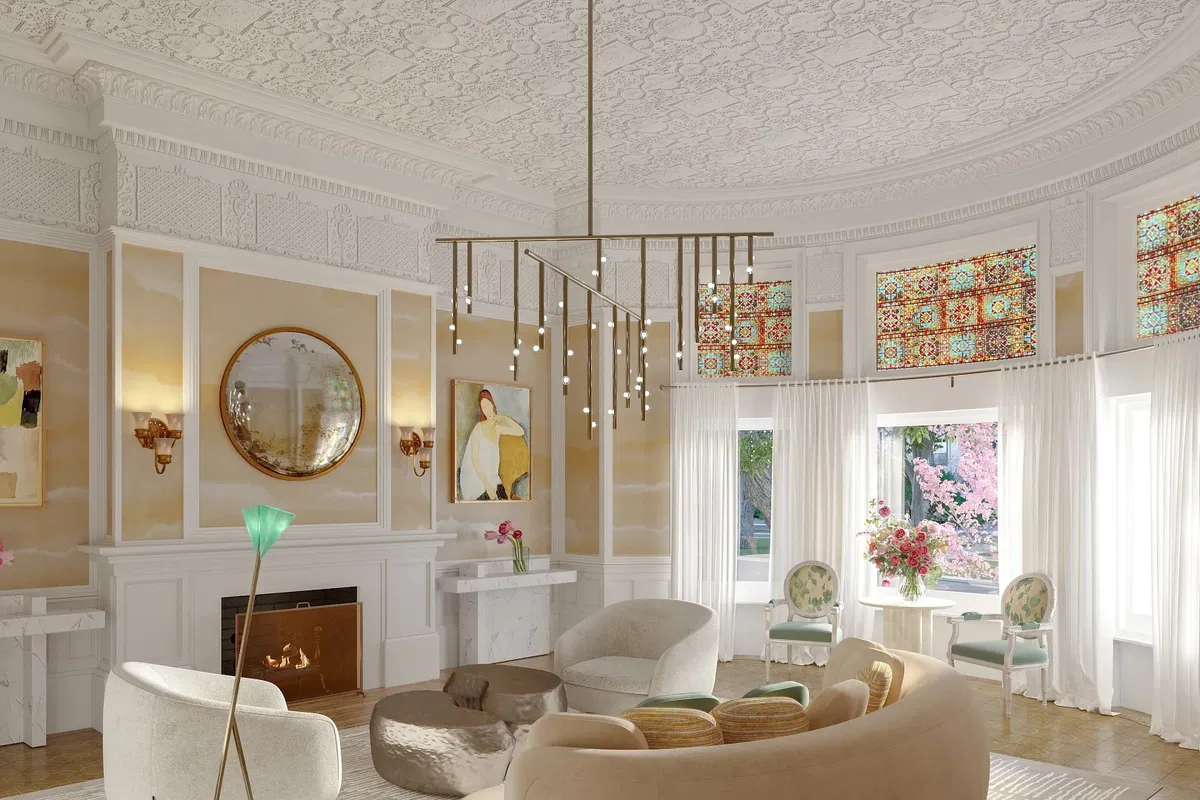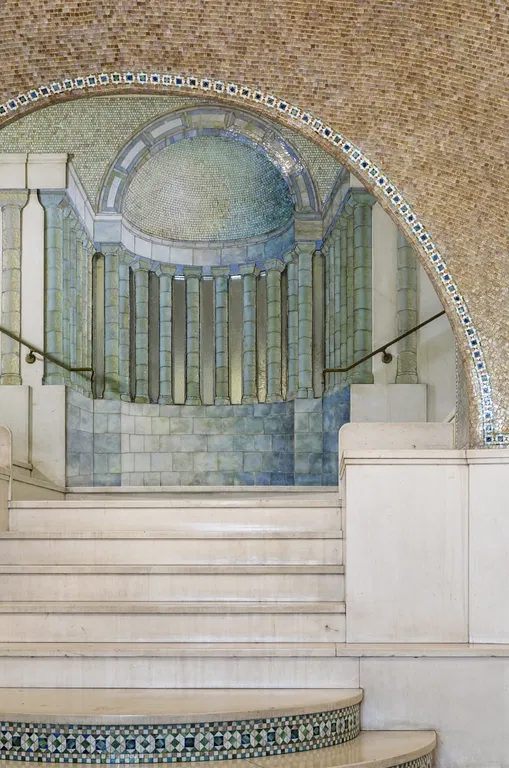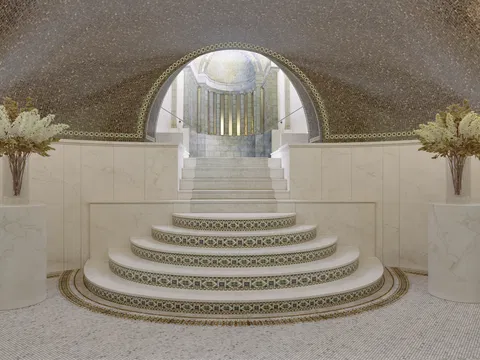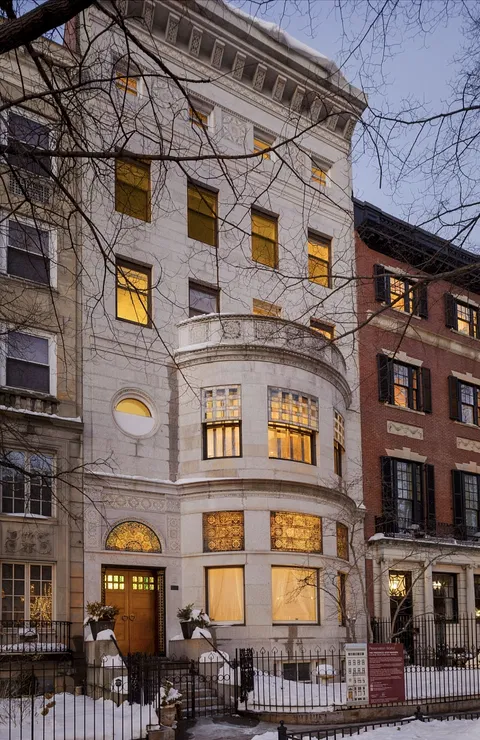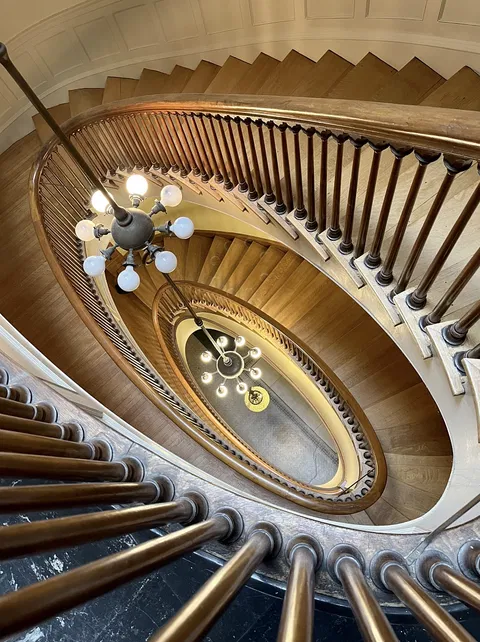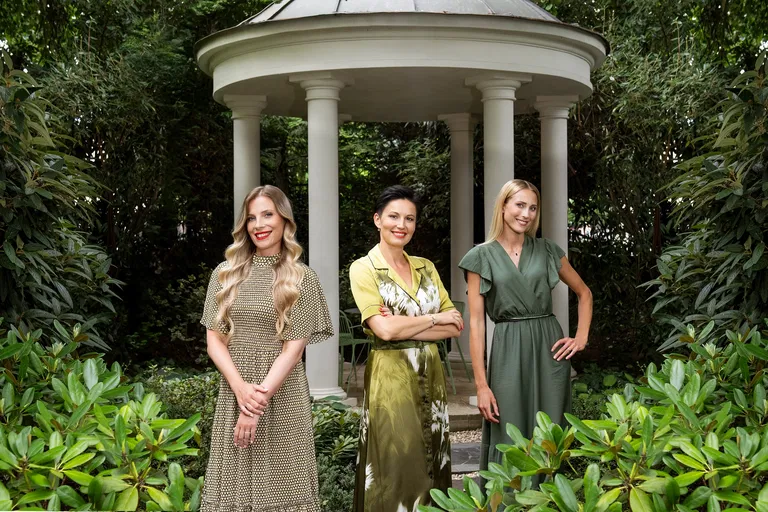A Gilded Age mansion designed by the son of the founder of Tiffany & Co. is up for sale for 17 million dollars. Adorned by a Tiffany glass ceiling, a distinctive trompe-l'œil on the staircase, arches, and glittering glass surfaces, the residence is the type of home where more really means more.
Rarer than a diamond from the famed jewelry designer, Ayer Mansion is truly one of a kind. This residence was created from top to bottom by Louis Comfort Tiffany, the son of Charles Tiffany, the founder of the Tiffany & Co brand. Unlike his father, however, Louis wasn't interested in jewelry, but rather in interior design and architecture.
Louis C. Tiffany was a trendsetter of tastes and a master of ornament and color, and he helped advance interior design and revolutionized stained glass, making him an influential figure in the history of American design.
The only fully completed building by Tiffany, the house was built in 1901 and consists of two wings with five floors each. The nearly 1,450 sq. m. mansion is considered the best living example of the designer’s vision and the only building he worked on from beginning to end (including the exterior).
Its layout consists of 6 bedrooms, 12 bathrooms, living and dining rooms, several lounges, a club room, 2 studies, a private suite, a home gym with a wellness zone, a wine bar, a smaller bar, a terrace, a rooftop terrace, and a garage for 3 cars.
The trompe-l'œil stairs, created with precision in every detail to make you believe they lead to an actual Greek temple, are a stand-out feature. Tiffany used his signature layering of clear and frosted glass to add this remarkable optical illusion with a three-dimensional depth.
The designer’s background in lamp-making is reflected in the creative use of glass throughout the home, whether in the form of plate glass or in stained glass details. There is no shortage of bespoke lighting practically in every room of the mansion. Tiffany's famous mosaic lamps frequently appear at auctions all over the world, typically fetching upwards of 3 million dollars. Their popularity has even fueled the sale of imitations.
For several decades, the building housed several non-profit organizations and was the cultural center for women from the nearby universities. During this time, the mansion’s doors were regularly open to the public for tours, concerts, and lectures.
Arguably one of the most desirable residences in Boston, it’s now being sold as a single private unit, precisely to preserve its impressive historic value—in 2005, the building was rightly designated a National Historic Landmark.

